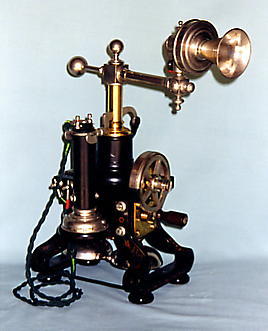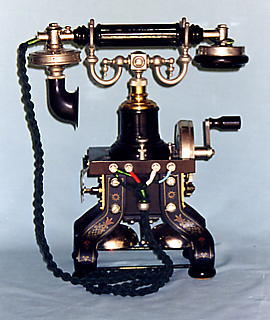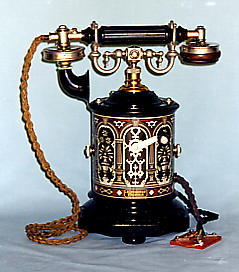
Desk set model AC100.
Introduced in1884 and popularly known as the "swivel transmitter" desk telephone. It included a magneto, a transmitter that could be rotated to prevent carbon granule packing, a separate receiver and a pair of bell gongs. The legs were magnetised to provide the magnetic field for the generator and were adorned with intricate transfers. Very few have survived in Australia mainly because this was the prototype for the next phone in this set of three.
Pick the transmitter, receiver or magneto to see drawings from Herbert and Proctor, Vol 1, 1932.

